White-eyed & Yuhinas of Vietnam – Zosteropidae
With 8 species White-eyed & Yuhinas of Vietnam, occurring over the Highlands. Yuhinas have crested like the Bulbuls family but they get a little fatter in a smaller size makes them so cute. And the White-eyed are quite similar to Iora but like their name, they have 2 white ringed around their eyes making them look likes are wearing glasses.
You may know: Yuhinas & Parrotbills is two families that create a unique diversity for the Highlands of Vietnam
The overview of White-eyed & Yuhinas families
The White-eyed & Yuhinas are a family, Zosteropidae, of small passerine birds native to tropical, subtropical and temperate Sub-Saharan Africa, Southern and Eastern Asia, and Australasia. White-eyes inhabit most tropical islands in the Indian Ocean, the western Pacific Ocean, and the Gulf of Guinea. Discounting some widespread members of the genus Zosterops, most species are endemic to single islands or archipelagos.
The silvereye, Zosterops lateralis, naturally colonised New Zealand, where it is known as the “wax-eye” or tauhou (“stranger”), from 1855. The silvereye has also been introduced to the Society Islands in French Polynesia, while the Japanese white-eye has been introduced to Hawaii.
The White-eyed & Yuhinas are mostly of undistinguished appearance, the plumage being generally greenish olive above, and pale grey below. Some species have a white or bright yellow throat, breast or lower parts, and several have buff flanks. As their common name implies, many species have a conspicuous ring of tiny white feathers around their eyes. The scientific name of the group also reflects this latter feature, being derived from the Ancient Greek for “girdle-eye”. They have rounded wings and strong legs. Like many other nectivorous birds, they have slender, pointed bills, and brush-tipped tongues. The size ranges up to 15 cm (5.9 in) in length.
All the species of white-eyes are sociable, forming large flocks which only separate on the approach of the breeding season. They build tree nests and lay two to four eggs which are usually pale blue. Though mainly insectivorous, they eat nectar and fruits of various kinds. The silvereye can be a problem in Australian vineyards, through piercing the grape allowing infection or insect damage to follow
Are you looking for Wildlife Tours in Vietnam?
WANEE VIETNAM is your go-to destination for "Wildlife Tours in Vietnam", specializing in Birding, Primate Watching, Herping, Photography Tours and Educational Tours led by our expert guides.White-eyed & Yuhinas of Vietnam species note
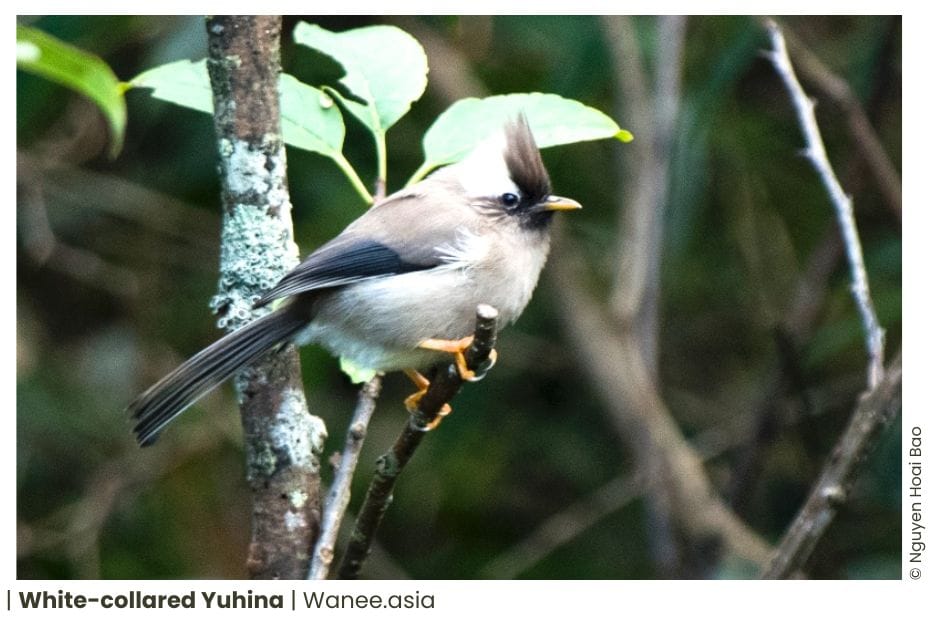
White-collared Yuhina Yuhina diademata
Status: Uncommon resident
Best time to watch & Photo: Feb-Apr
Tour cover: North-West
Hotspot: Sa Pa – Fansipan Mountain
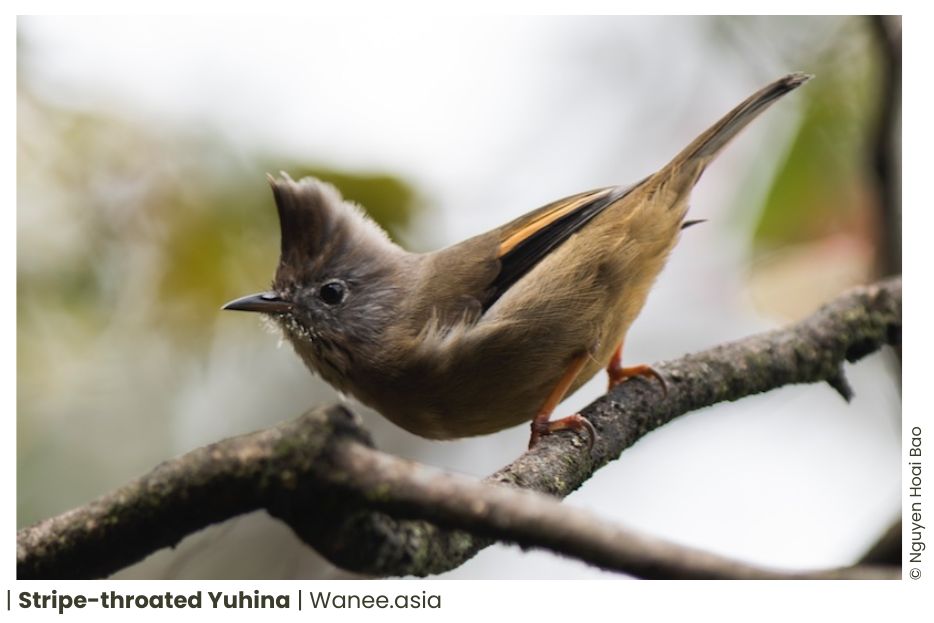
Stripe-throated Yuhina Yuhina gularis
Status: Uncommon resident
Best time to watch & Photo: Feb-Apr
Tours: Highlands
Hotspot: Sa Pa – Fansipan Mountain
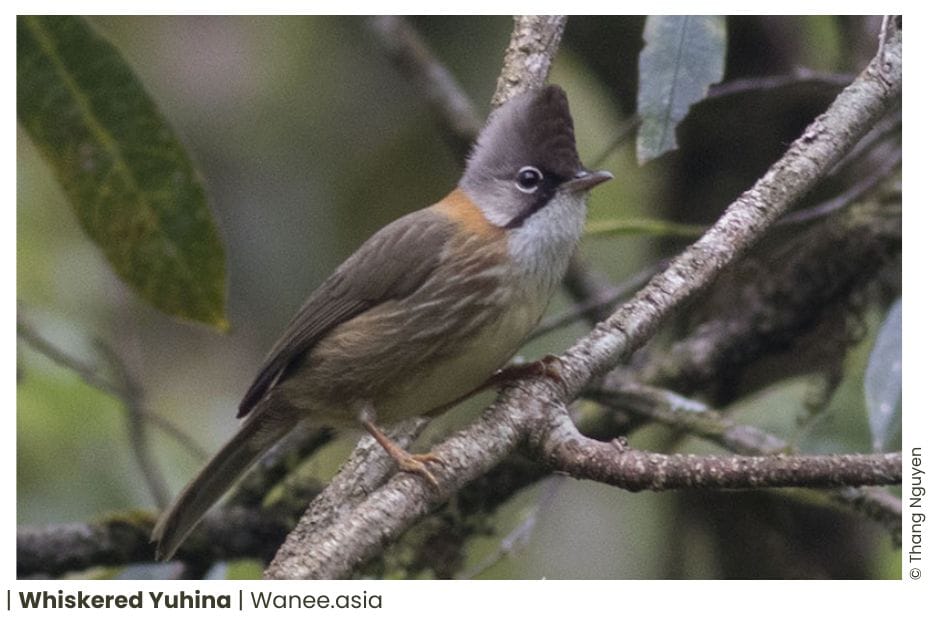
Whiskered Yuhina Yuhina flavicollis
Status: Uncommon resident
Best time to watch & Photo: Feb-Apr
Tours: Northern
Hotspot: Sa Pa – Fansipan Mountain
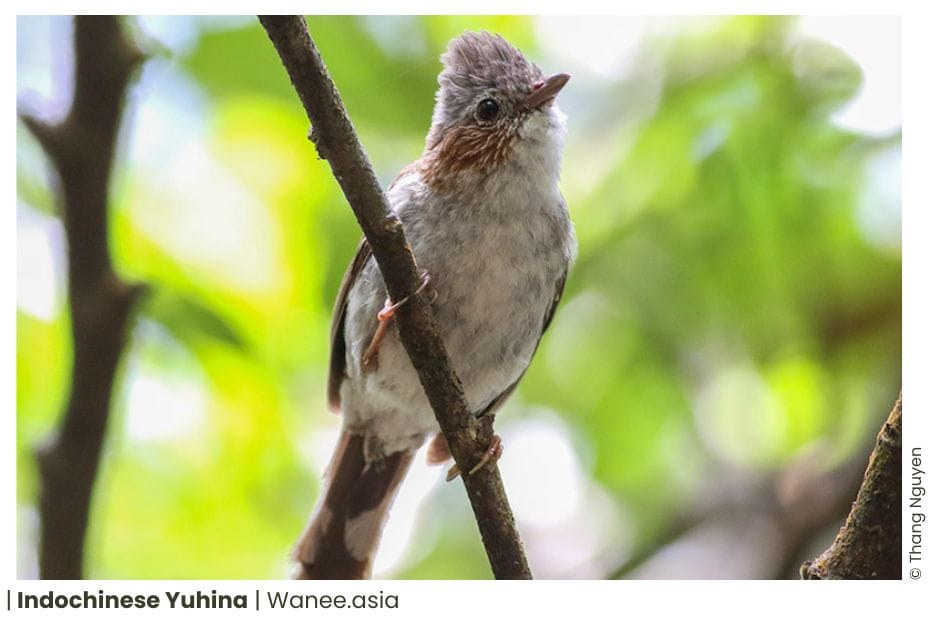
Indochinese Yuhina Yuhina torqueola
Status: Common resident
Best time to watch & Photo: Feb-Apr
Tours: Exclude Southern
Hotspot: Dalat, Bach Ma, Tam Dao
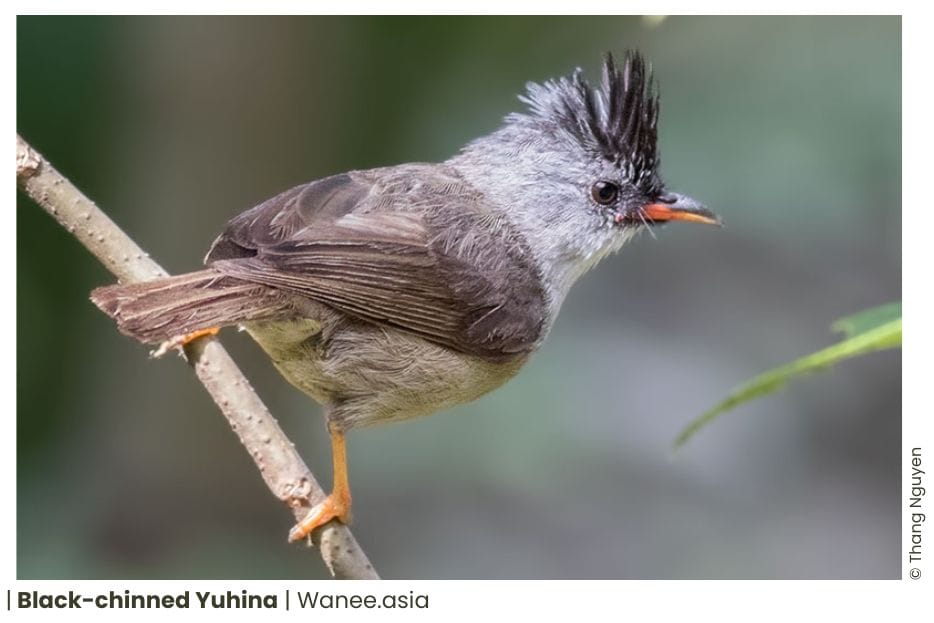
Black-chinned Yuhina Yuhina nigrimenta
Status: Common resident
Best time to watch & Photo: Feb-Apr
Tours: Exclude Southern
Hotspot: Dalat, Bach Ma, Tam Dao

Chestnut-flanked White-eye Zosterops erythropleurus
Status: Uncommon Pass Migrant
Best time to watch & Photo: Feb-Apr
Tours: Northern
Hotspot: Xuan Thuy, Cuc Phuong, Ba Be
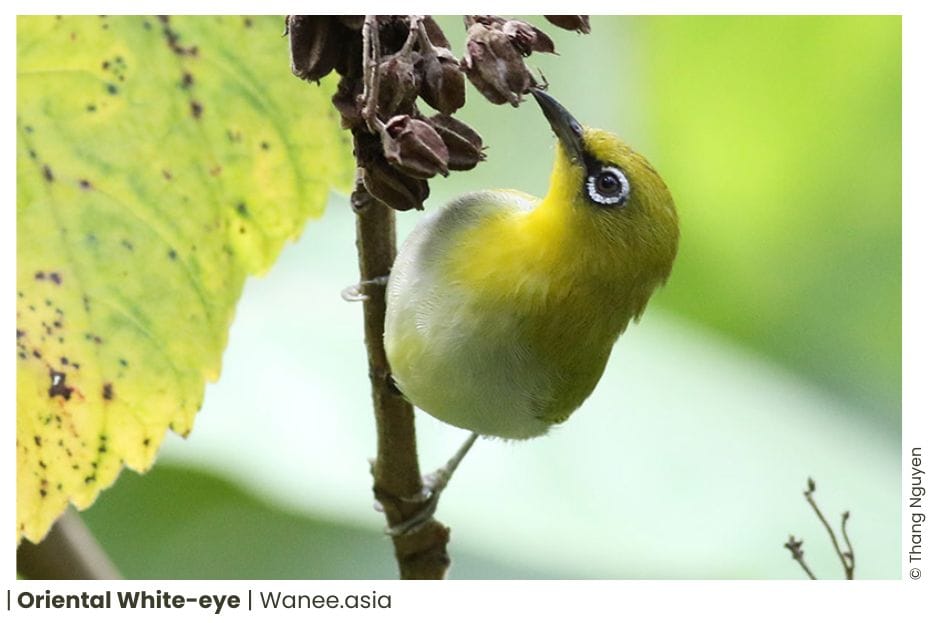
Oriental White-eye Zosterops palpebrosus
Status: Common Resident (Throughout)
Best time to watch & Photo: Feb-Apr
Tours: Throughout
Hotspot: Cat Tien, Nui Dinh, Ma Da

Japanese White-eye Zosterops japonicus
Status: Rare pass migrant
Best time to watch & Photo: Jun-Aug
Tours:
Hotspot: Bach Ma, Cuc Phuong, Ba Vi
Crocodile Trail – The Best Birding Trail in Cat Tien National Park
If you’re a birder or nature photographer planning a trip to Vietnam, few places offer [...]
Cong Troi Trail – Top 1 Dalat Plateau Birding Trail Experience
If you’re a birder or nature photographer planning a trip to Vietnam’s Central Highlands, the [...]
How to Identify the Greater Sand Plover, Tibetan Sand Plover and Siberian Sand Plover
ContentsWhite-eyed & Yuhinas of Vietnam – ZosteropidaeWhite-eyed & Yuhinas of Vietnam species noteAll Vietnam Birds [...]
Highlights of Cat Tien National Park Reptiles and Amphibian Endemics
Spanning over 71,350 hectares of tropical forests, grasslands, and wetlands, Cat Tien National Park is [...]
Highlights of Cat Tien National Park Mammals in a World Biosphere Reserve
In addition to reptiles and birds, Cat Tien National Park is also rich in mammals, [...]
Kontum Plateau Endemic and Highlight bird
Kontum Plateau Endemic And Highlight Bird species like Chestnut-eared Laughingthrush and top birding routes while [...]